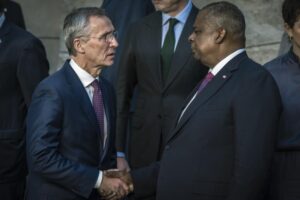
NATO is set to agree on a new defense investment pledge this summer that will aim to increase member nations’ spending commitments, the alliance’s leader said Wednesday. Jens Stoltenberg, the NATO secretary general, said the new pledge could involve taking the current target for spending two percent of GDP on defense and making that a minimum commitment rather than a goal to reach. “As we continue to adapt our alliance, we need to have the right resources, so ministers also…

 By
By 











